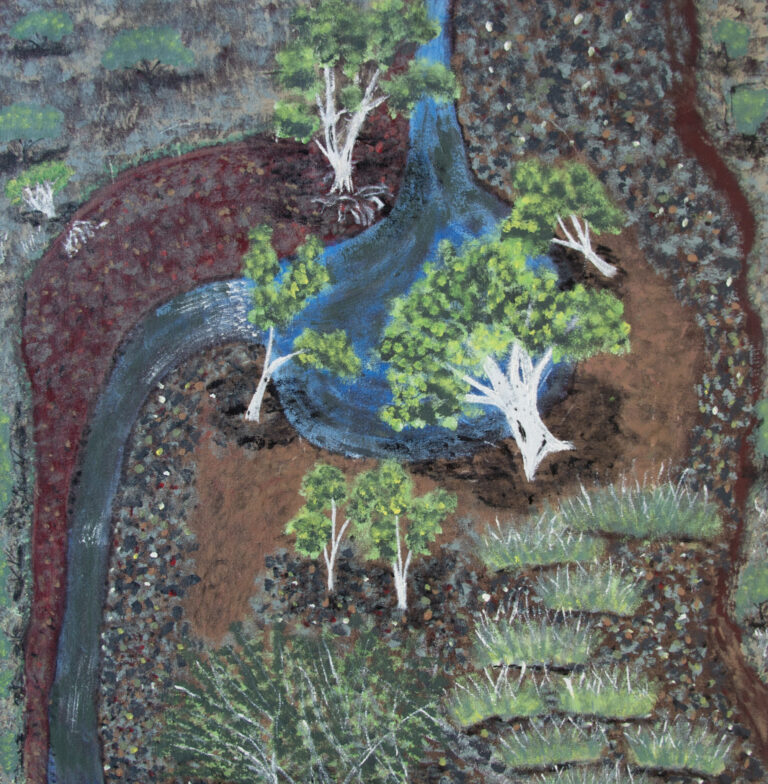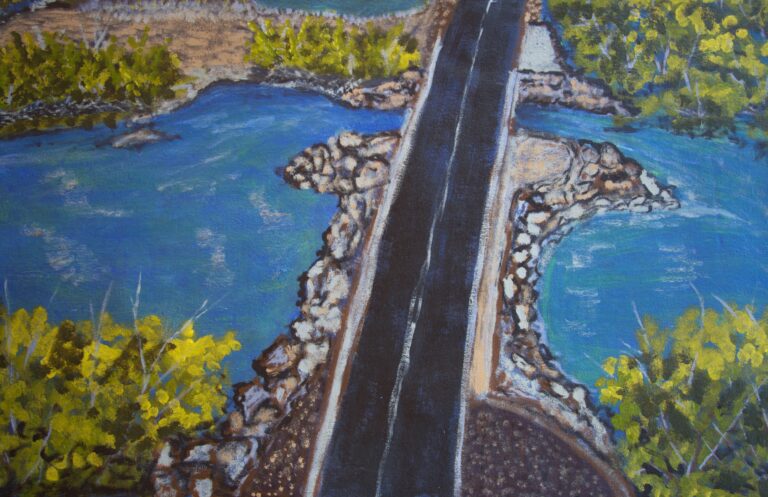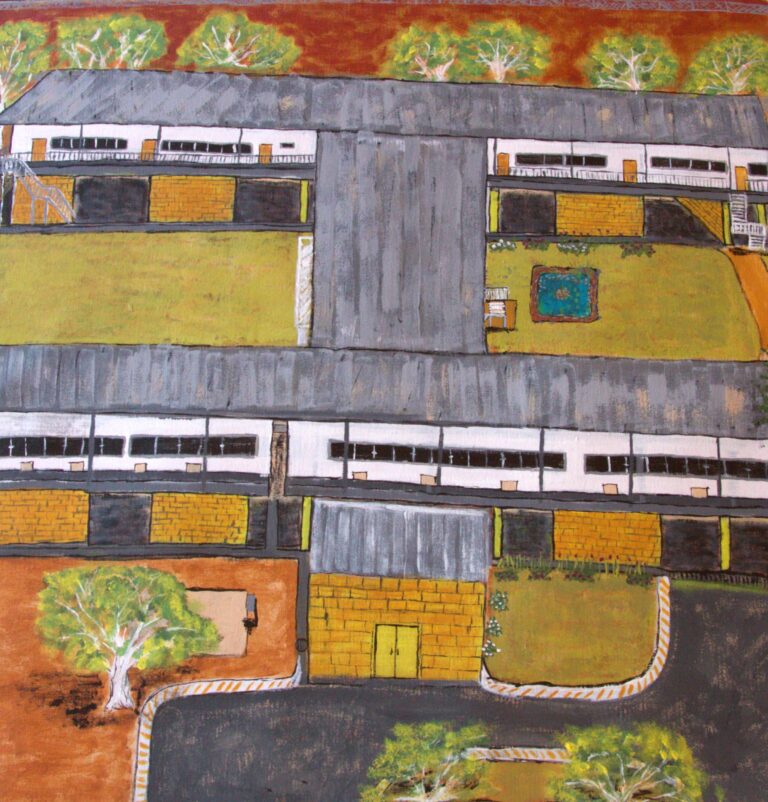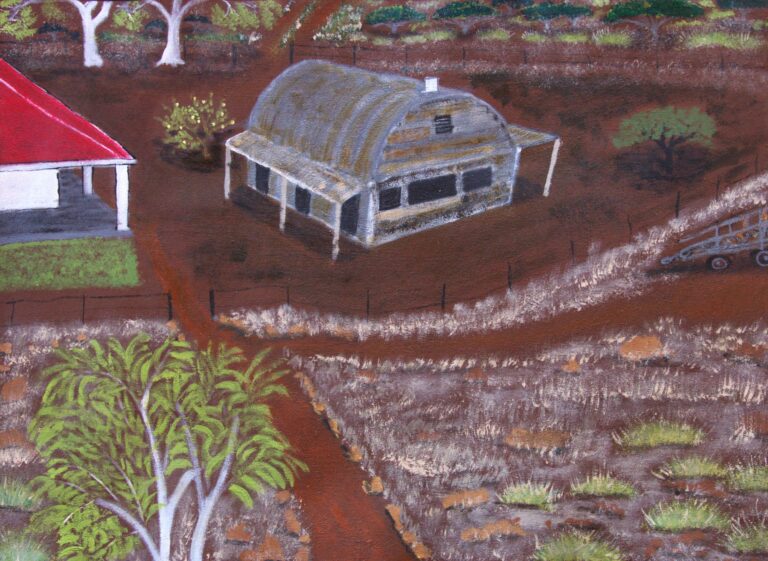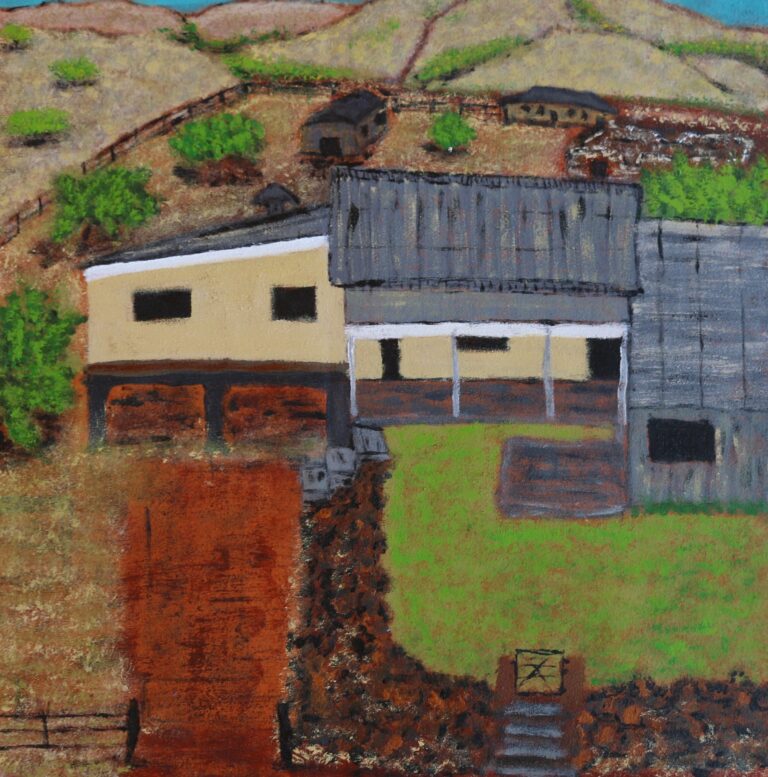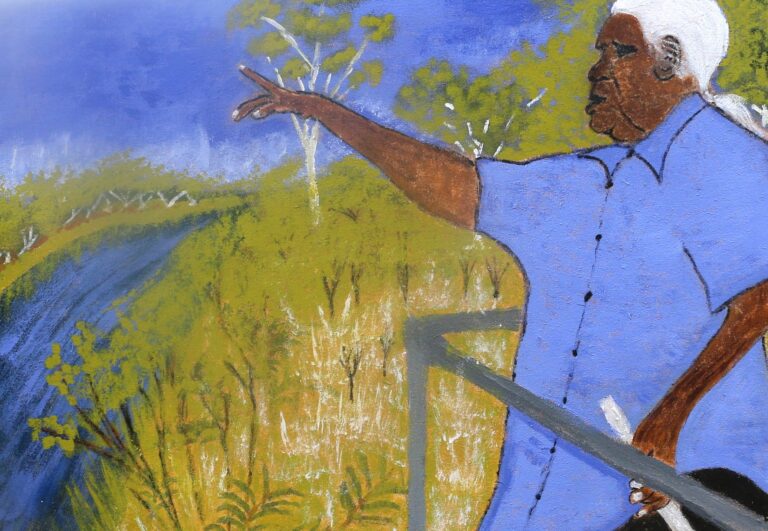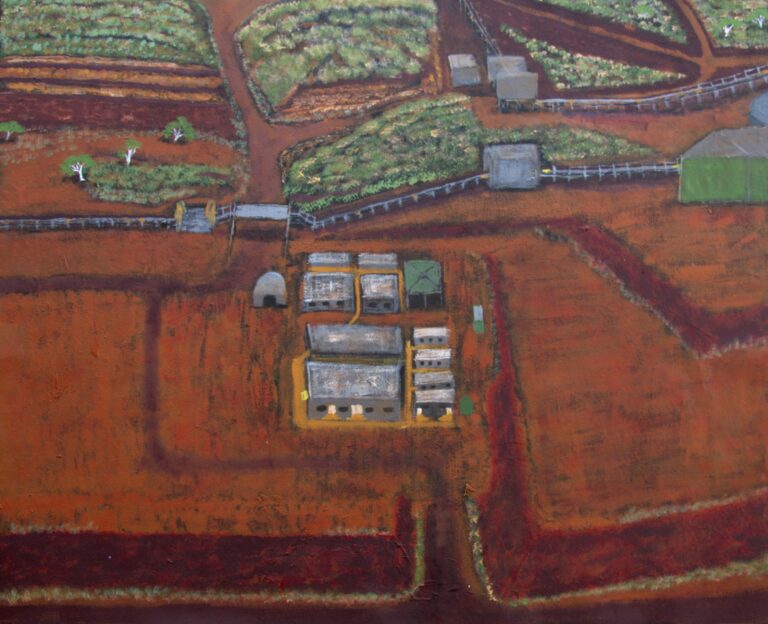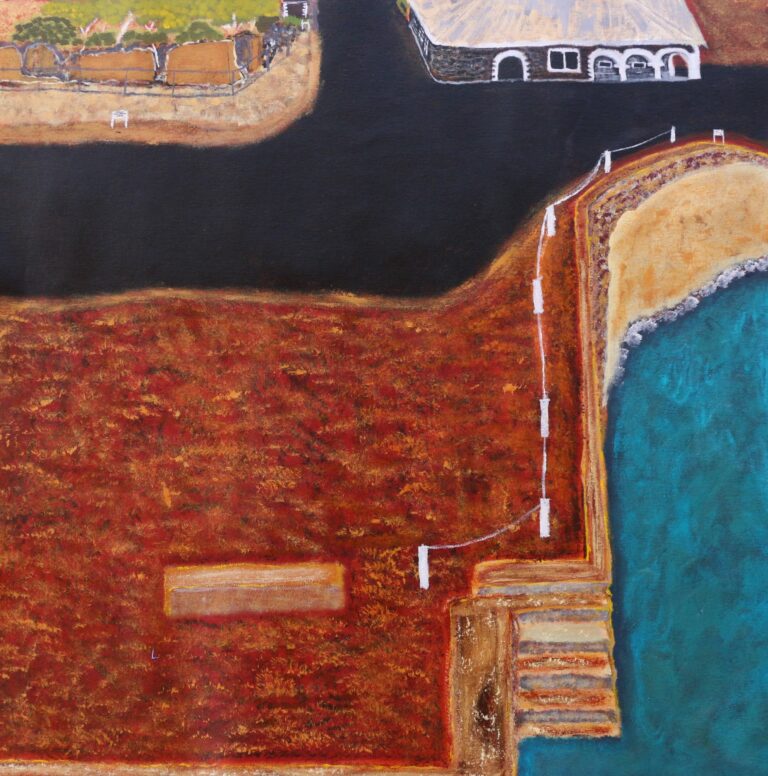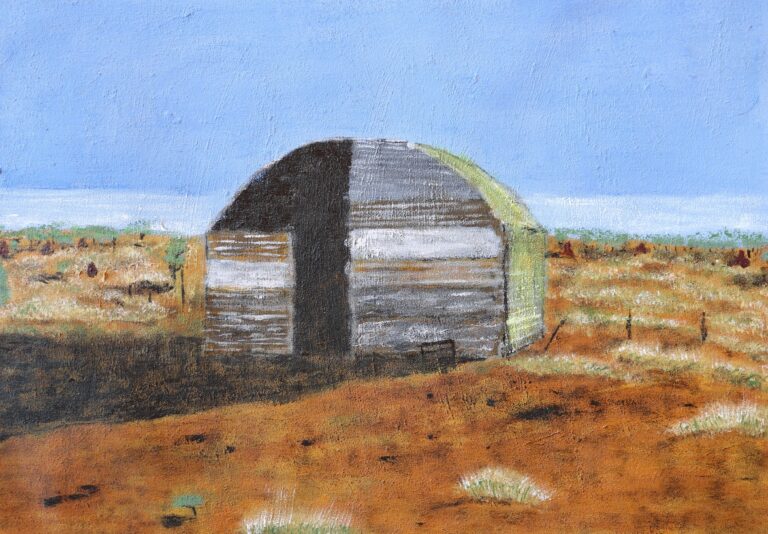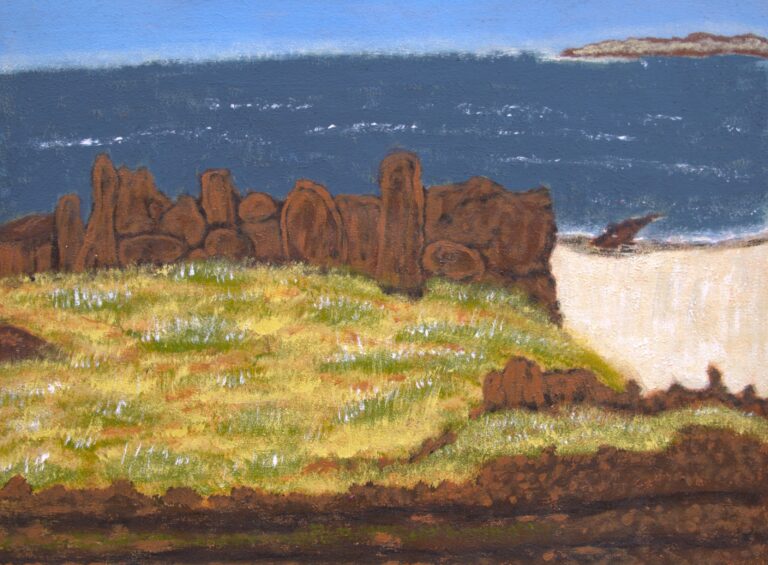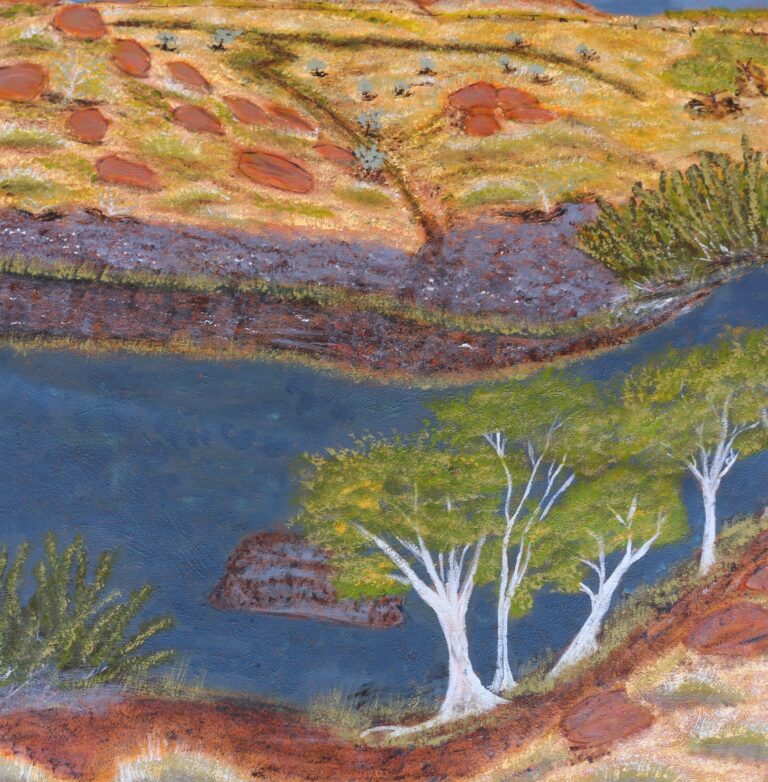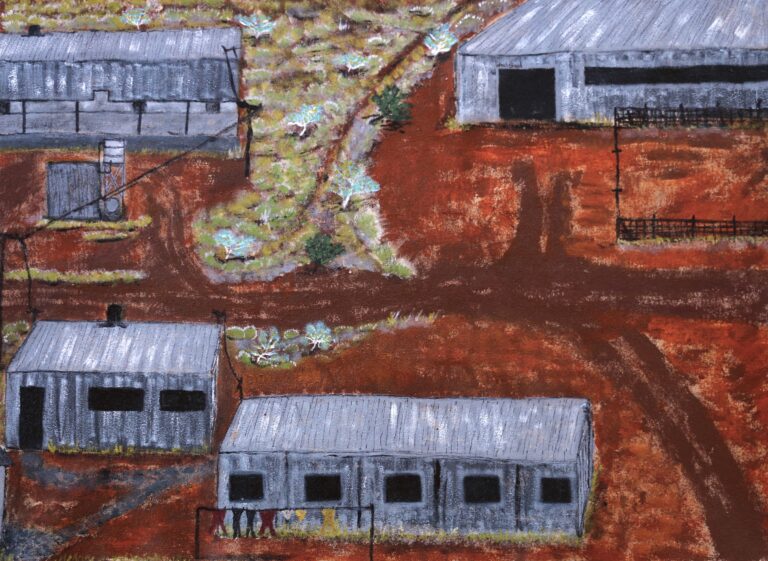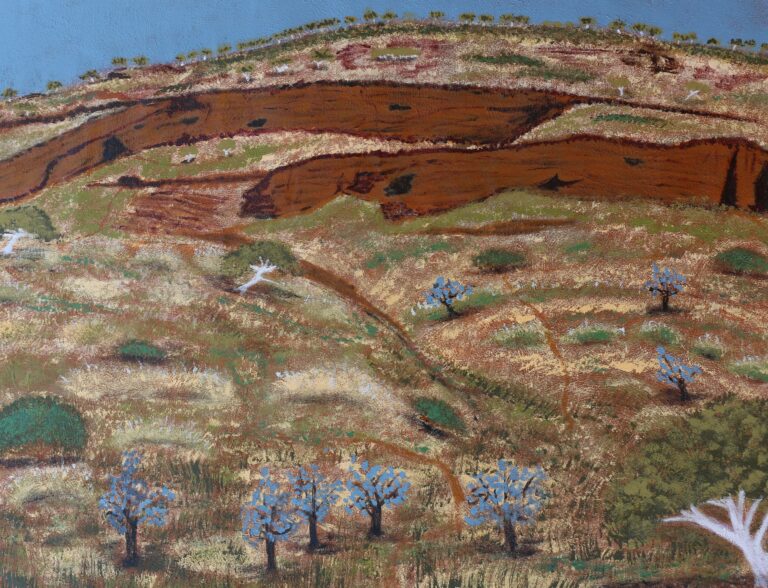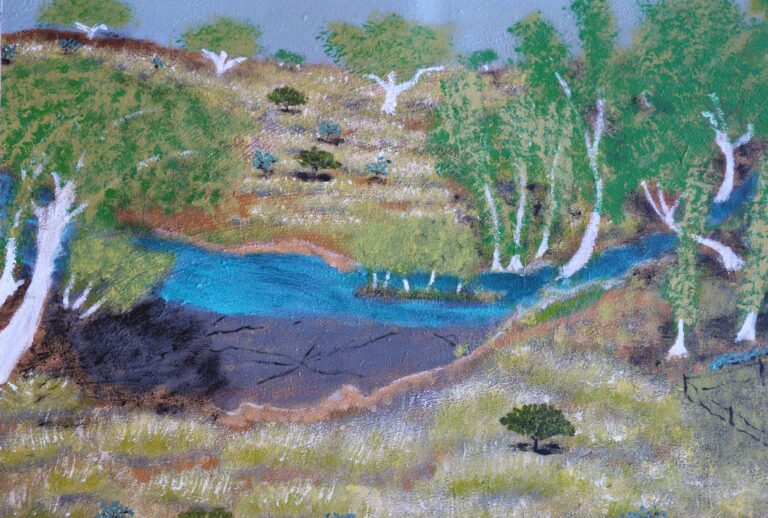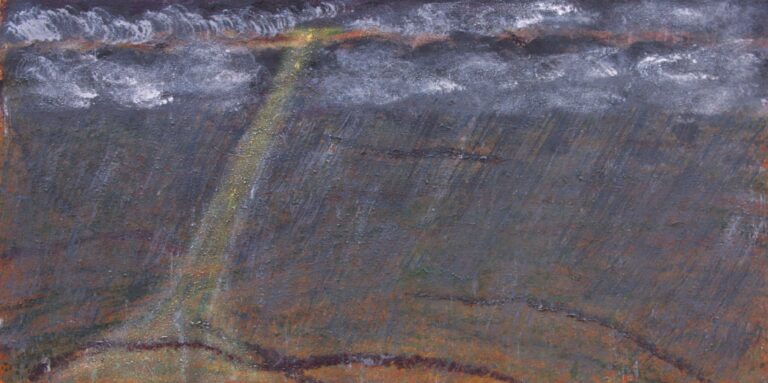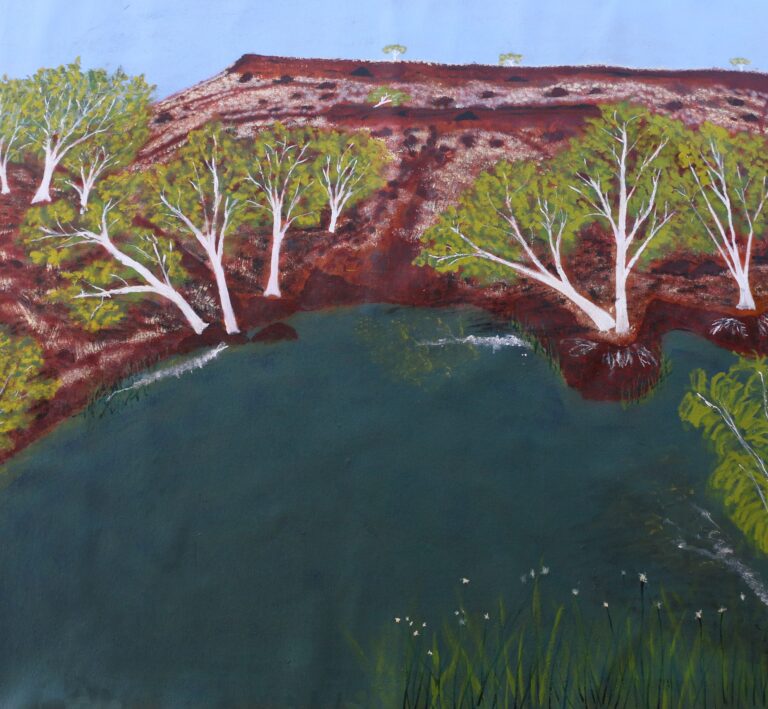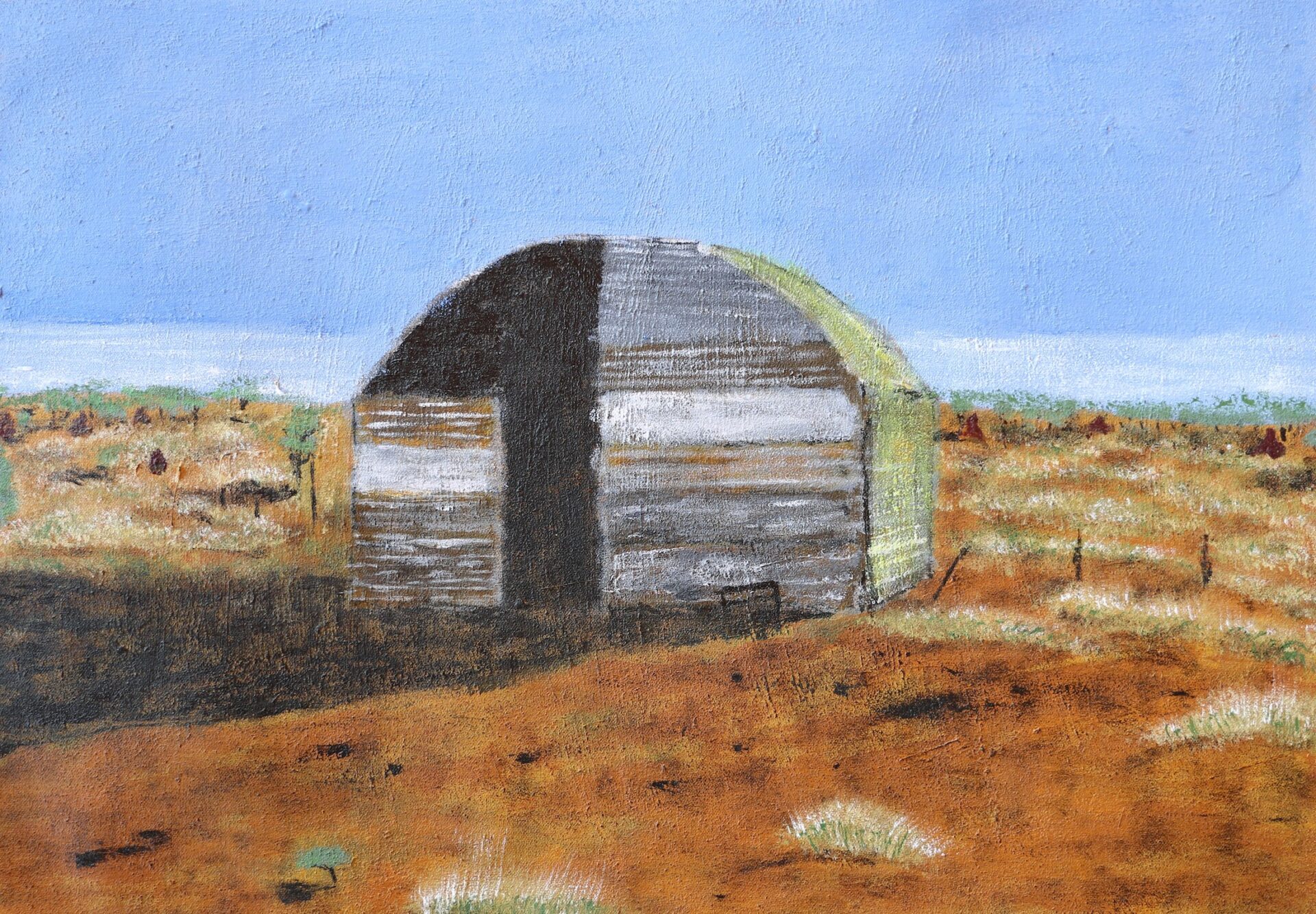
Artworks
Installations
“I paint my country from my memory. Each painting is from a picture in my mind. I often paint from childhood memories, recording places as they were before they were interfered with.”
Rodney Adams, 2024
Rodney Adams is a Yindjibarndi man born in the town of Roebourne. He made his first painting in 2021 after encouragement from his partner and fellow Yinjaa Barni artist Renee Wally. From these first works, Adams expressed an immediate desire to capture his homeland figuratively. Remembering Country consists of 16 paintings created in Adams’ home, further extending on his inaugural 2022 solo exhibition My Childhood Memories. The works draw on Adams’ day-to-day experience, his imagination and childhood memories, and together create a personal and historical map of Roebourne.
In Remembering Country, we encounter places previously depicted by the artist, but also more intimate spaces introduced to us for the first time. Adams takes us to Millstream Homestead:
“This is where I grew up. Where my family worked and where I got my first job as a station hand. I have strong childhood memories from here. I use the memories in my mind to paint places as I remember them.”
Another new location is a detailed painting of a school titled ‘Memory of Roebourne School 80s’. Adams draws thick outlines, forges pathways, and embeds architectural features with clarity. He recalls,
“When I remember going to primary school, we had a fish pond. And now this school is not here anymore. It’s gone. It’s a new school in this place.”
While many works are personal records, others are more historical. ‘Old ‘Cossack Historical Town’ is one of these recordings.
“Cossack is a historic ghost town at the mouth of the Harding River. It had been home to the traditional owners for tens of thousands of years prior to this. In the 1870s it was a thriving port but by the 1910s it was a sleepy ghost town. Today there are a few buildings left which have withstood the powerful cyclones of the Pilbara region.”
Other places present in Adams’ first exhibition, such as Woodbrook Station, reappear in Remembering Country. Talking about the painting ‘Sheering Shed’, Adams says,
“This is Woodbrook Station. You can see the manager’s house and the shearer’s house and the kitchen. This is how I remember it before the cyclone came and destroyed the buildings. I paint with my feet on the ground, but I can map out the country as if I was flying over. Instead of painting with dots and marks like traditional aboriginal paintings, I like to paint things figuratively so everyone can understand.”
In Adams’ paintings, we often see Roebourne from an aerial perspective. He envisages the landscape deeply, imagining it from above, seeing its entirety.
Tambrey Station Camp also appeared in Adams’ earlier exhibition, in a work titled ‘Tambrey Station Outcamp – Little tin hut where my grandmothers and grandfathers grew up and were raised while their parents were working in the stations’. Adams paints the second version of the hut like the first: centred, isolated and surrounded by dry earth and shrub. However, here, he crops closer to the structure and adds details of the light reflecting off the metal like a mirage. The hut is a place exisiting in the artist’s mind but was experienced and lived in by his grandparents. He elaborates on the meaning behind the work:
“This painting is of a hut where my grandmother and grandfathers grew up. They were all born around this area but lived in this hut. There were 14 of them, plus their mums and dads. The reason I paint this is to record my memories and remembering of my grandparents and what they taught me around this region from the country. This country is the Pilbara, up in the Tablelands where the Yindjibarndi lies and this is where my grandparents come from so I have connections to this area they also taught me a lot about this area.”
Alongside paintings of built environments are ones of untouched Yindjibarndi land. Unlike the former where nature is isolated and sectioned off (most visible in Adams’ painting ‘O.P.F Mine Site on Yindjibarndi Land’), here bodies of water are in constant flow, and the bushes and wildflowers remain rooted as they sway freely in the wind.
“The rangers in the Pilbara glow at certain times of the day. The light hits the face of the rock and the colours shift. My country is full of life. Native plants grow in tough conditions against the odds. We are strong like these plants.”
Adams paints the Pilbara’s various weather conditions. The colour of the sky reaches vast intensities. The region is parched and incandescent, other times drenched and grey.
“My country, in the Pilbara, gets most of its rain in the summer season. Big thunderstorms roll in over the country and shower the land with much-needed rain. We watch the landscape come to life after heavy rains.”
The rough canvas texture of Adams’ paintings is an ode to the landscape, and he creates texture by mixing Pilbara Earth into his paint. The dynamic surface in the idyllic painting, ‘Tableland Country’, renders the hills with vibration and life.
“This is my grandfather’s country where he was born. It brings lots of memories about his dogging days when he was young. There are lovely hills and wildflowers surrounding this country. My grandfather would tell me many stories about his time here.”
Among paintings of built sites and the natural landscape is a piece titled ‘My Grandmother’, his first portrait and the only one of its kind in the exhibition.
“This is a portrait of my late grandmother, standing up in her country, pointing and talking to her grandchildren about how the Millstream River became a permanent pool from a dry river bed.”
The Pilbara has a long memory. It holds some of the Earth’s oldest continental crust. Stories pass through this land, and for Adams, painting the land and echoes of its past, allows these stories to continue to live.

